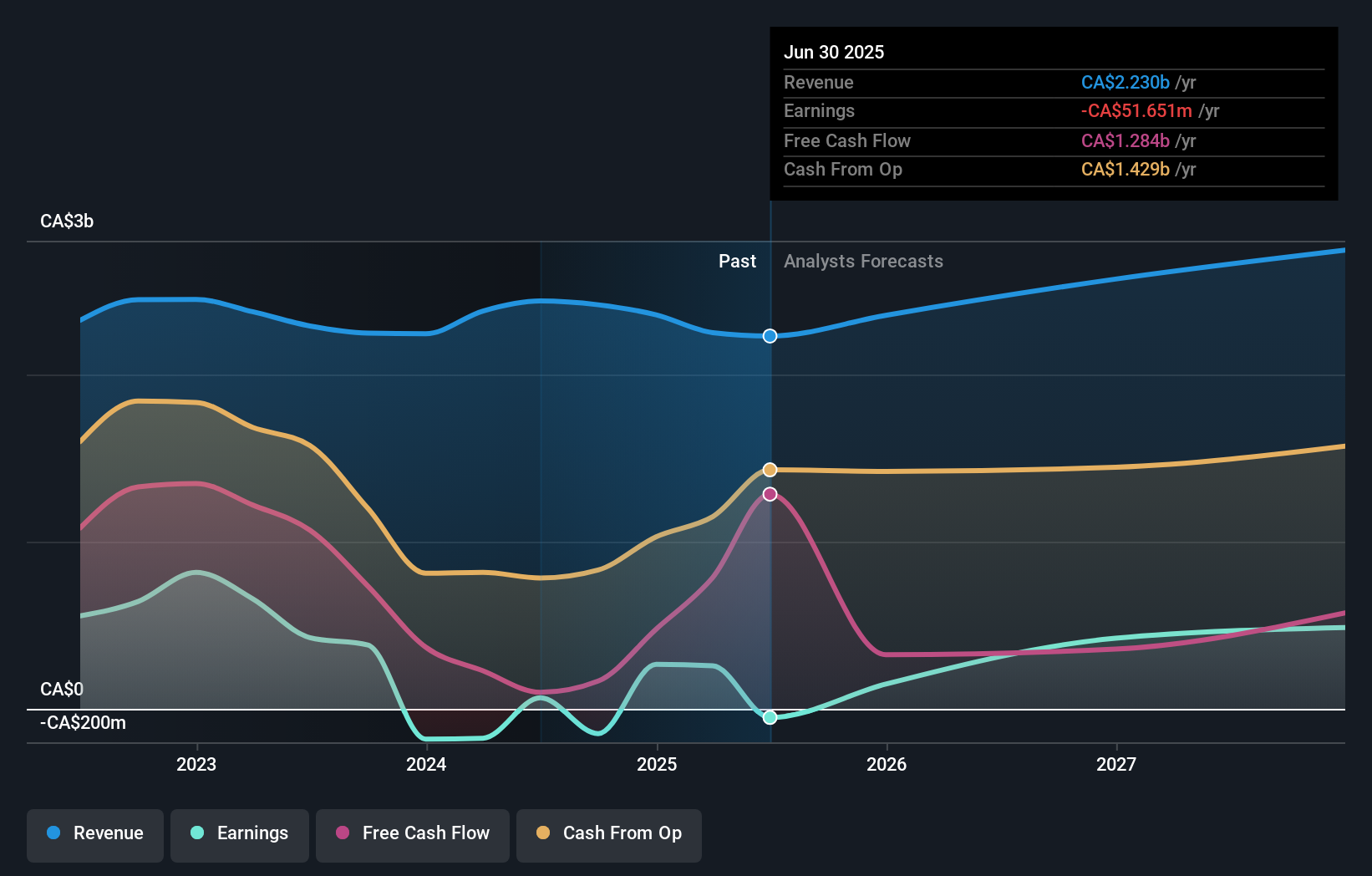- Canada
- /
- Renewable Energy
- /
- TSX:NPI
Retail investors who hold 51% of Northland Power Inc. (TSE:NPI) gained 3.3%, institutions profited as well
Key Insights
- Significant control over Northland Power by retail investors implies that the general public has more power to influence management and governance-related decisions
- The top 25 shareholders own 45% of the company
- Insiders have been buying lately
To get a sense of who is truly in control of Northland Power Inc. (TSE:NPI), it is important to understand the ownership structure of the business. With 51% stake, retail investors possess the maximum shares in the company. Put another way, the group faces the maximum upside potential (or downside risk).
Following a 3.3% increase in the stock price last week, retail investors profited the most, but institutions who own 49% stock also stood to gain from the increase.
In the chart below, we zoom in on the different ownership groups of Northland Power.
See our latest analysis for Northland Power

What Does The Institutional Ownership Tell Us About Northland Power?
Institutional investors commonly compare their own returns to the returns of a commonly followed index. So they generally do consider buying larger companies that are included in the relevant benchmark index.
We can see that Northland Power does have institutional investors; and they hold a good portion of the company's stock. This can indicate that the company has a certain degree of credibility in the investment community. However, it is best to be wary of relying on the supposed validation that comes with institutional investors. They too, get it wrong sometimes. When multiple institutions own a stock, there's always a risk that they are in a 'crowded trade'. When such a trade goes wrong, multiple parties may compete to sell stock fast. This risk is higher in a company without a history of growth. You can see Northland Power's historic earnings and revenue below, but keep in mind there's always more to the story.

Northland Power is not owned by hedge funds. The company's largest shareholder is BMO Asset Management Corp., with ownership of 9.7%. With 4.3% and 4.2% of the shares outstanding respectively, RBC Global Asset Management Inc. and The Vanguard Group, Inc. are the second and third largest shareholders.
A deeper look at our ownership data shows that the top 25 shareholders collectively hold less than half of the register, suggesting a large group of small holders where no single shareholder has a majority.
While it makes sense to study institutional ownership data for a company, it also makes sense to study analyst sentiments to know which way the wind is blowing. There are a reasonable number of analysts covering the stock, so it might be useful to find out their aggregate view on the future.
Insider Ownership Of Northland Power
While the precise definition of an insider can be subjective, almost everyone considers board members to be insiders. Management ultimately answers to the board. However, it is not uncommon for managers to be executive board members, especially if they are a founder or the CEO.
Most consider insider ownership a positive because it can indicate the board is well aligned with other shareholders. However, on some occasions too much power is concentrated within this group.
Our information suggests that Northland Power Inc. insiders own under 1% of the company. It's a big company, so even a small proportional interest can create alignment between the board and shareholders. In this case insiders own CA$1.3m worth of shares. Arguably, recent buying and selling is just as important to consider. You can click here to see if insiders have been buying or selling.
General Public Ownership
The general public -- including retail investors -- own 51% of Northland Power. This level of ownership gives investors from the wider public some power to sway key policy decisions such as board composition, executive compensation, and the dividend payout ratio.
Next Steps:
It's always worth thinking about the different groups who own shares in a company. But to understand Northland Power better, we need to consider many other factors. Like risks, for instance. Every company has them, and we've spotted 2 warning signs for Northland Power (of which 1 shouldn't be ignored!) you should know about.
If you are like me, you may want to think about whether this company will grow or shrink. Luckily, you can check this free report showing analyst forecasts for its future.
NB: Figures in this article are calculated using data from the last twelve months, which refer to the 12-month period ending on the last date of the month the financial statement is dated. This may not be consistent with full year annual report figures.
Valuation is complex, but we're here to simplify it.
Discover if Northland Power might be undervalued or overvalued with our detailed analysis, featuring fair value estimates, potential risks, dividends, insider trades, and its financial condition.
Access Free AnalysisHave feedback on this article? Concerned about the content? Get in touch with us directly. Alternatively, email editorial-team (at) simplywallst.com.
This article by Simply Wall St is general in nature. We provide commentary based on historical data and analyst forecasts only using an unbiased methodology and our articles are not intended to be financial advice. It does not constitute a recommendation to buy or sell any stock, and does not take account of your objectives, or your financial situation. We aim to bring you long-term focused analysis driven by fundamental data. Note that our analysis may not factor in the latest price-sensitive company announcements or qualitative material. Simply Wall St has no position in any stocks mentioned.
About TSX:NPI
Northland Power
Operates as a power producer in Canada, the Netherlands, Germany, Colombia, Spain, the United States, and internationally.
Very undervalued with reasonable growth potential and pays a dividend.
Similar Companies
Market Insights
Community Narratives



